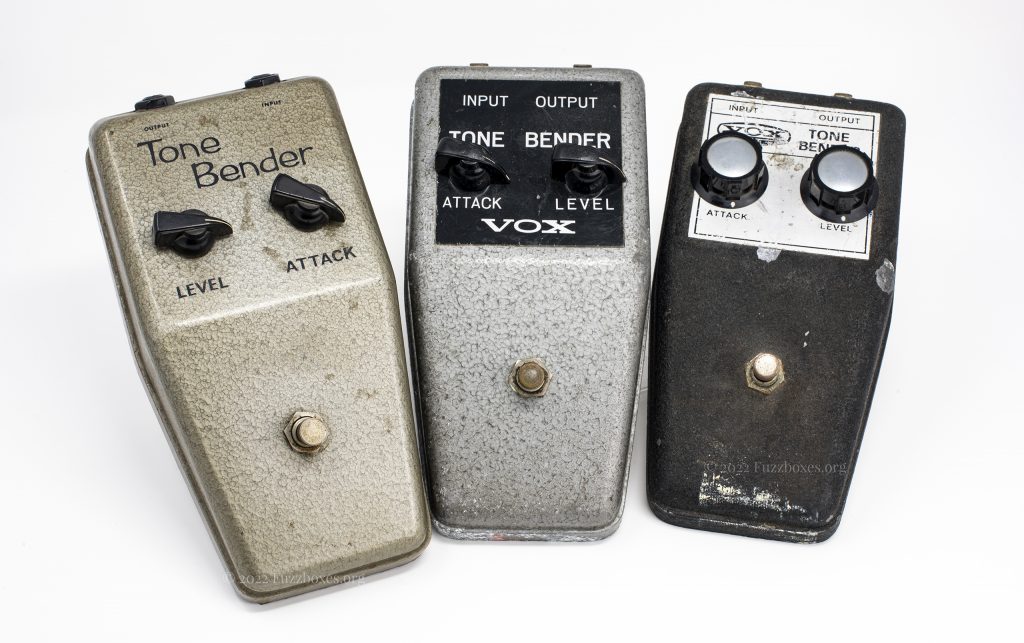- History
- Nomenclature
- Tech specs
- Unusual variants
- OEM products
- Ronno’s Tone Bender
- Other notable users
- Distant cousins
- Share your fuzz!
History
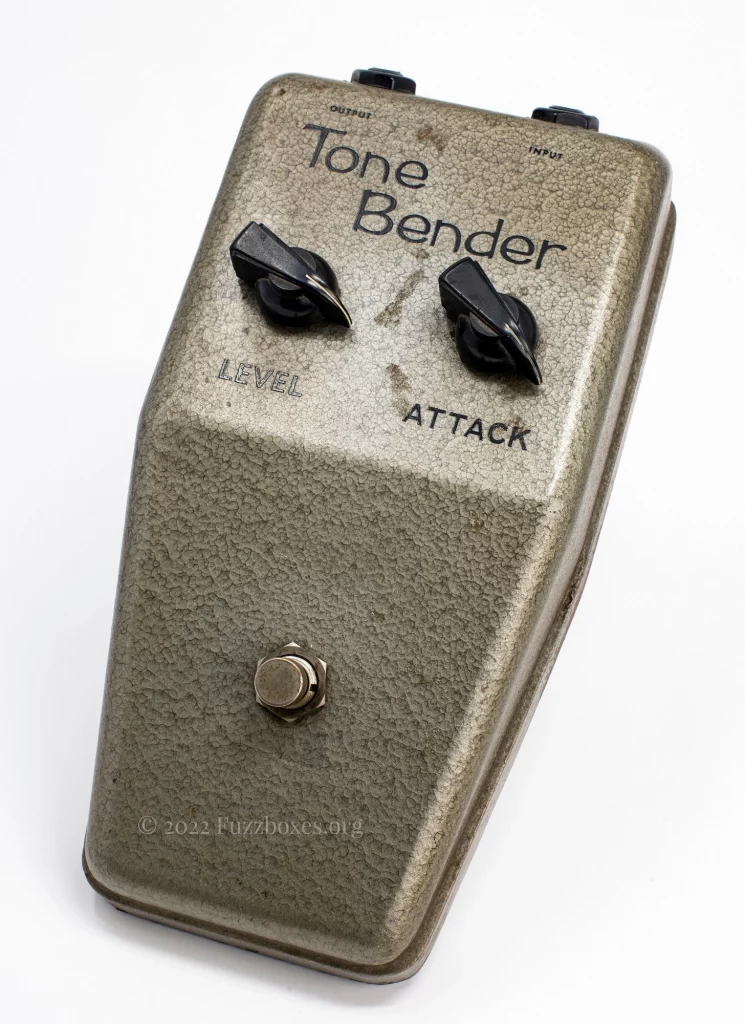
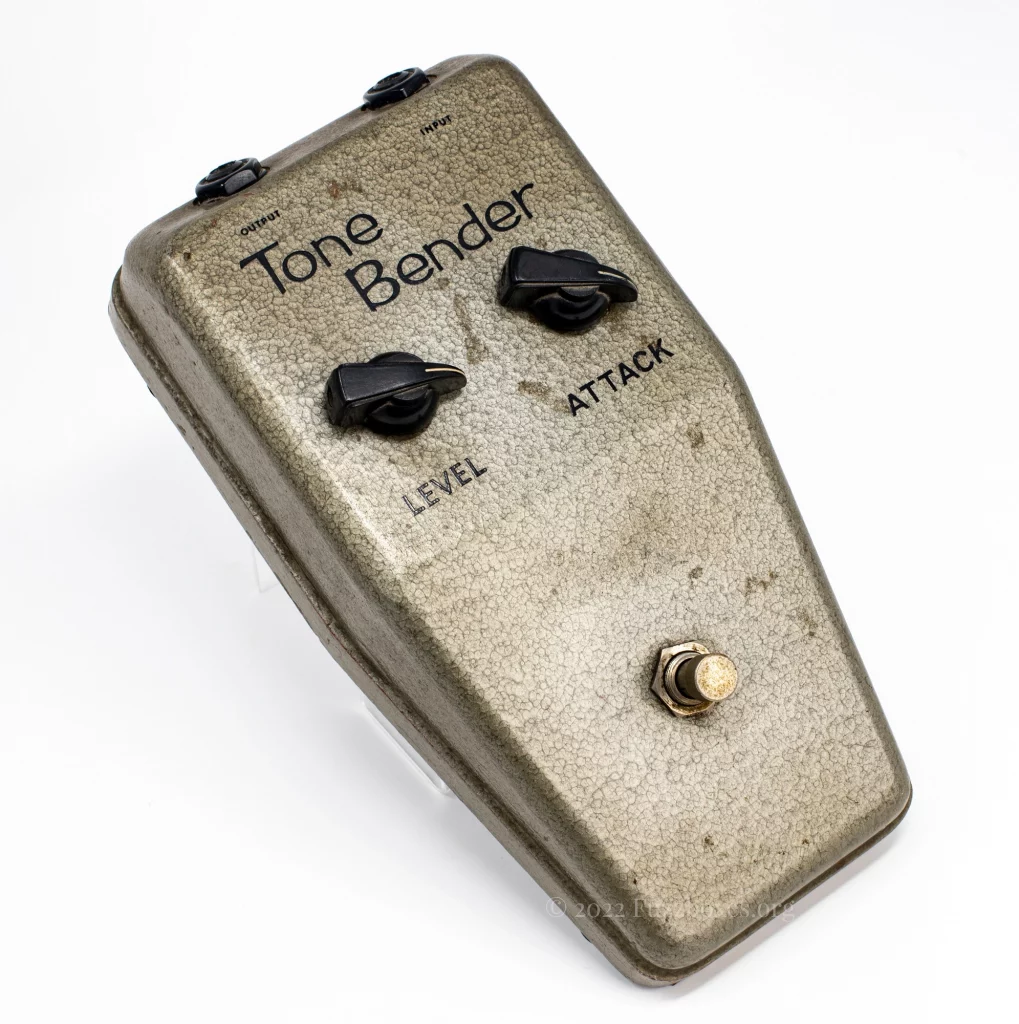
The Tone Bender ‘MK1.5’ was an influential two-transistor fuzz box that was built by Sola Sound in the mid-1960s. The exact origins of the ‘MK1.5’ are still in dispute, and there is no consensus as to whether the model was conceived by Gary Hurst, by Dick Denney, or perhaps by somebody else altogether. It is also unknown whether the ‘MK1.5’ Tone Benders were built by Gary Hurst (who had already been building the earlier ‘MKI’ Tone Bender for Sola Sound in 1965), or whether — considering the apparently large number of pedals built — Sola Sound might have subcontracted a local company for the job.
The ‘MK1.5’ was markedly different to the earlier Tone Bender ‘MKI’ in that it came in a cast aluminium enclosure, as opposed to the folded steel boxes. The general circuitry and construction was also a lot simpler than the three-transistor ‘MKI’, and the builder(s) would have been able to produce these pedals in much greater quantities compared with Gary Hurst’s time-consuming efforts with the ‘MKI’.
Early ‘MK1.5’ Tone Benders date to 1965, which means that there is actually a possibility that it was being produced alongside Gary Hurst’s ‘MKI’ Tone Bender for a while. Date codes on the potentiometers of surviving pedals also prove that the ‘MK1.5’ was still in production by May of 1966.
According to witness accounts, the ‘MK1.5’ was being sold at a variety of different shops across the UK, including by Jennings in Dartford. These pedals were likely sold at Macari’s own chain of Musical Exchange shops in London, although there is no first-hand evidence to corroborate this yet.
Contrary to popular belief, the Tone Bender ‘MK1.5’s were actually manufactured in fairly large quantities, considering the relatively short period of time that the model was around for. Exact production numbers are sadly unknown, but vintage examples of the ‘MK1.5’ resurface fairly regularly, and with over 40 original pedals known to have survived thus far, they are more abundant than many of the fuzz boxes built by Sola Sound’s competitors during 1966.
Later in that year, Sola Sound would discontinue the ‘MK1.5’ Tone Bender, and offer a modified version of the same circuit under its own, as well as under other company’s brands, as the now-famous Tone Bender Professional MKII.
Nomenclature
The odd model designation for the ‘MK1.5’ refers to the way that this model sits, chronologically, in between the first version of the Tone Bender, known informally as the ‘MKI’, and the version that Sola Sound began to offer in late 1966, which was officially designated the Professional MKII.
A useful way of looking at this model is by considering it to be a transitional Tone Bender, built between the famous three-transistor ‘MKI’ and Professional MKII models.
As with the ‘MKI’, the ‘MK1.5’ moniker is one that was only applied to the two-transistor Tone Bender by collectors in modern times. Until Sola Sound released the Tone Bender Professional MKII, their pedals were all known simply as ‘Tone Benders’ (unless branded otherwise).
Tech specs
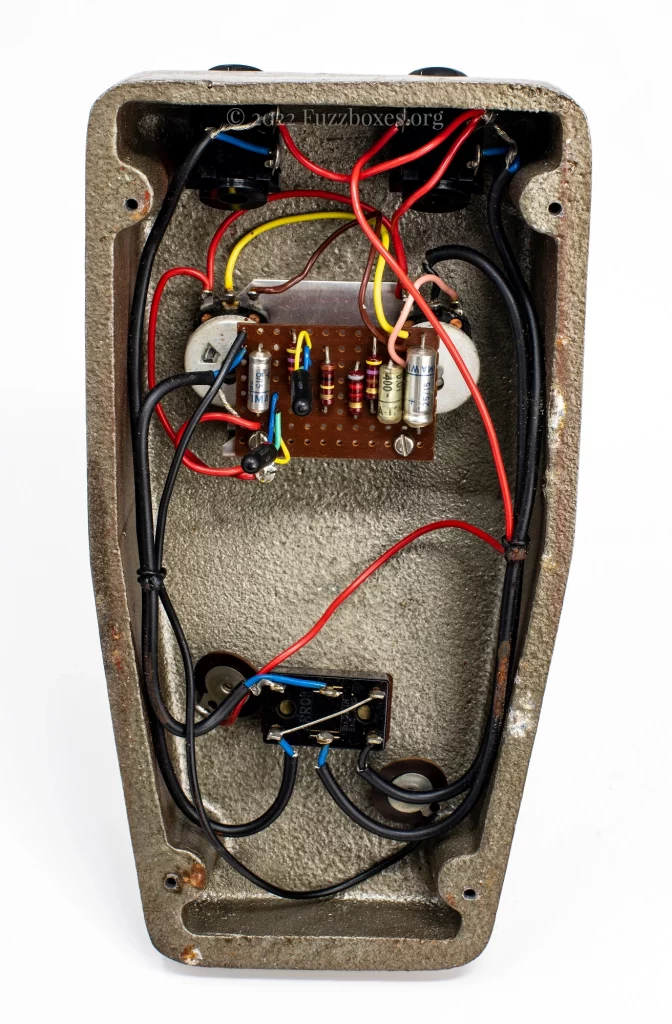
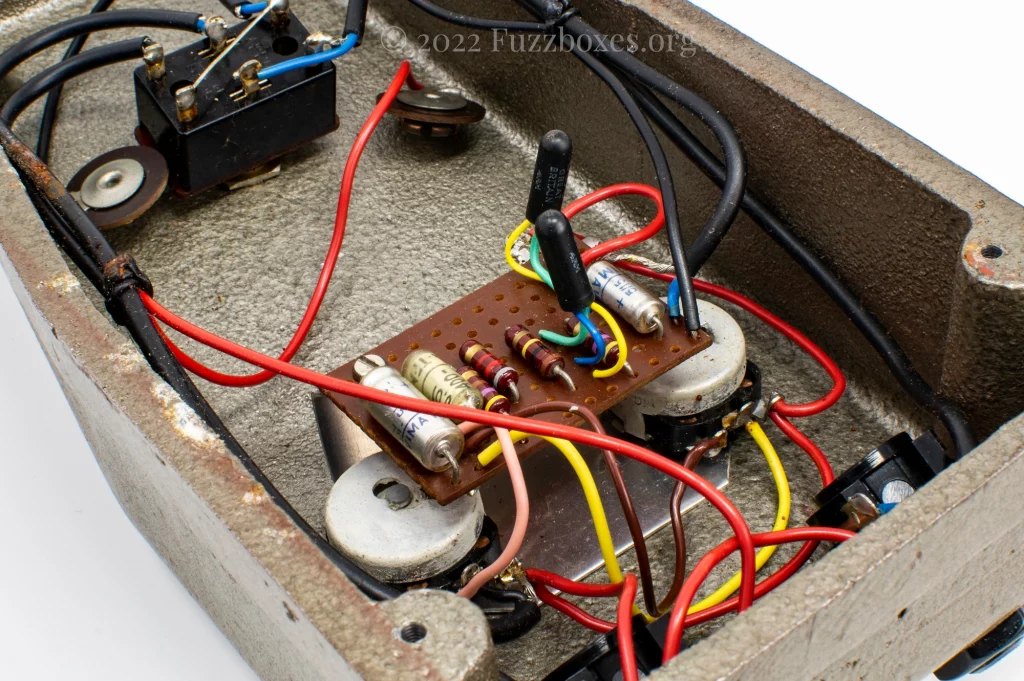
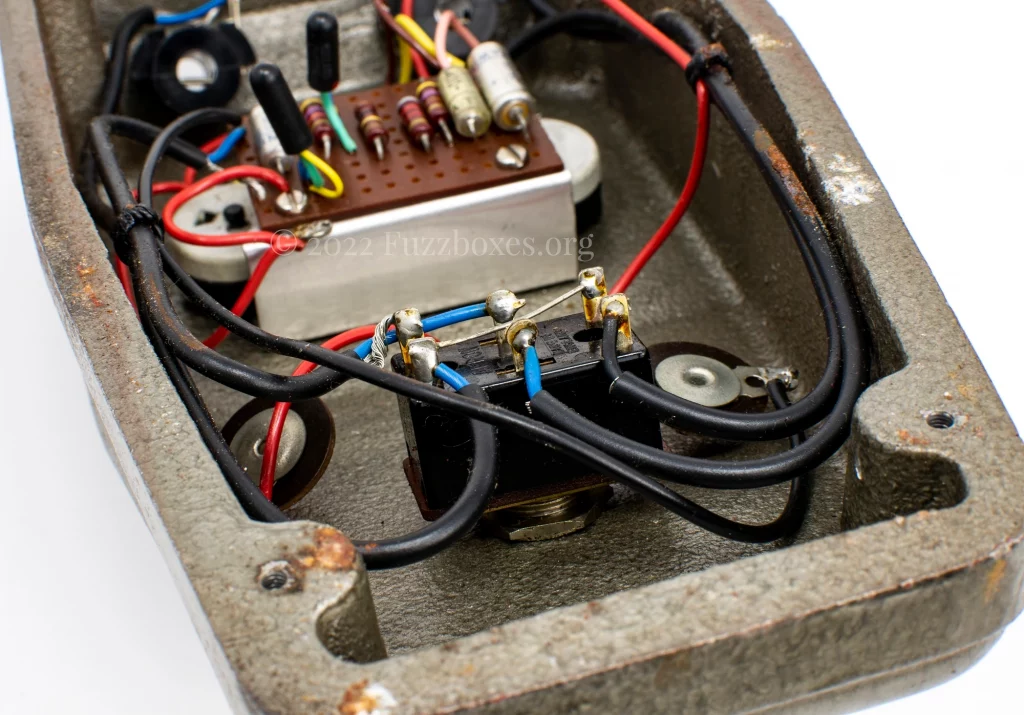
Compared with the earlier ‘MKI’ Tone Bender, there isn’t much to see inside an original example of a ‘MK1.5’. The small square of stripboard is populated with a ‘textbook’ negative-feedback amplifier circuit, typically with two Mullard OC75 germanium transistors (although some early ‘MK1.5’s’ were fitted with Impex S3-1T transistors instead).
During the early stages of the ‘MK1.5’s’ production, the pedals were fitted with a 500kΩ level potentiometer, as opposed to the typical 100kΩ pot that most schematics describe. The larger value level pot extends the lower frequency cut-off, and allows for a bassier fuzz sound. Because Arbiter’s Fuzz Face (released in late 1966) features almost identical parts values, including a 500kΩ level pot, it is very likely that Arbiter used an early ‘MK1.5’ for reference whilst designing their own fuzz box.
The similarities between these closely-related pedals can be seen on the diagram below.
Unusual variants
“Goldie MK1.5”
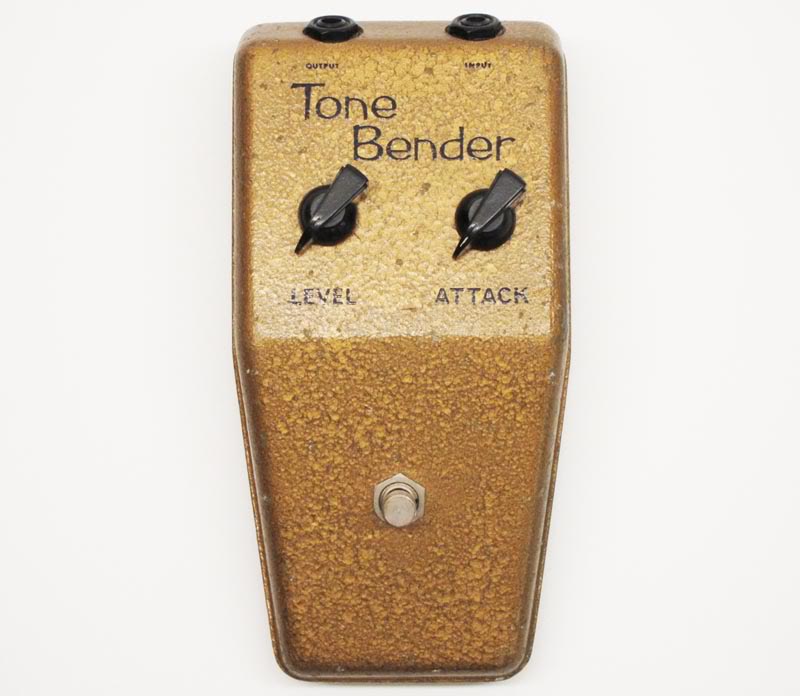
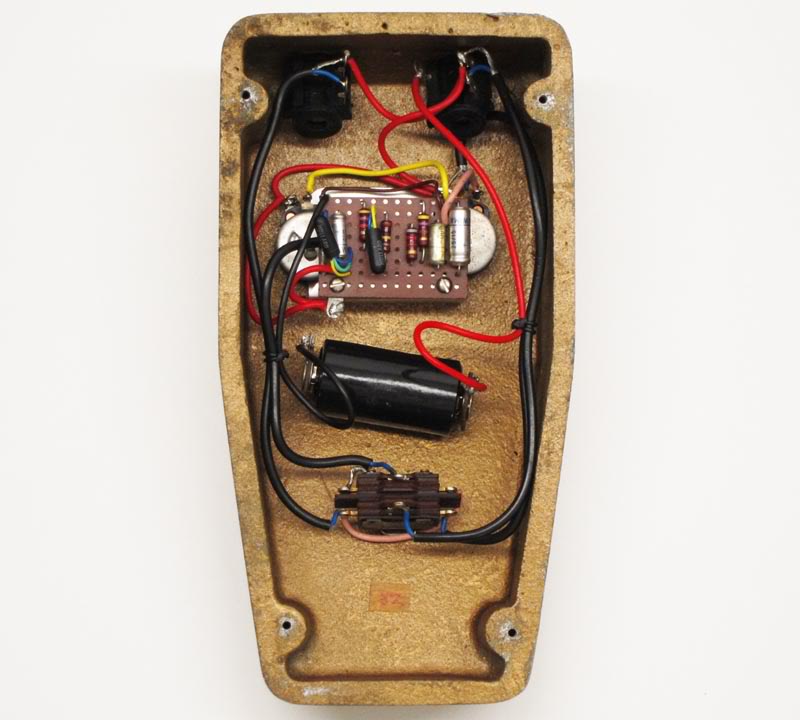
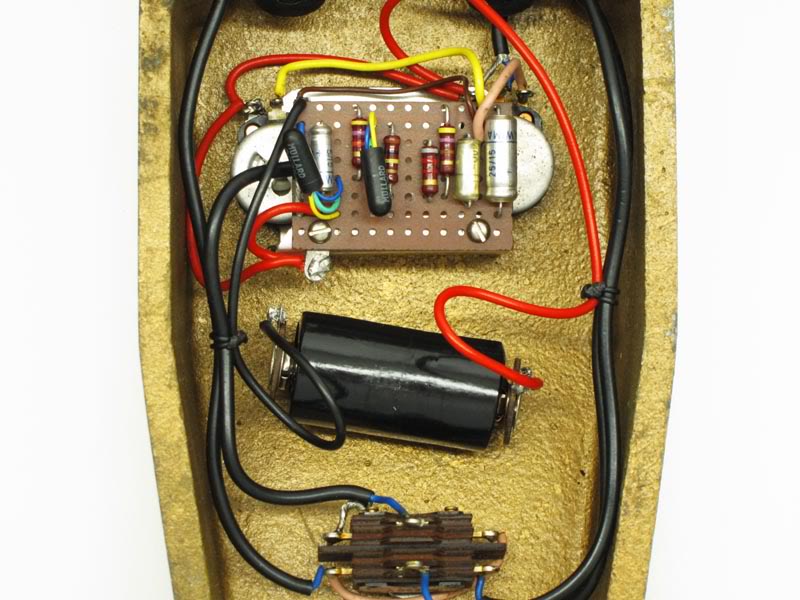
Some of the earliest ‘MK1.5’ Tone Benders were housed in gold-painted enclosures, as opposed to the more commonly-seen grey hammertone. The circuitry inside this particular pedal is complete with numerous features consistent with an early-production example of the model, such as the 500kΩ level pot, and the ‘wafer’ style Arrow DPDT switch.
There are, at time of writing, only two other known surviving examples of Tone Benders built in this gold-painted cast enclosure (one of which having been fully rebuilt, with very little left of its original electronics; and the other boasting a Tone Bender ‘MKI’ circuit). This gold-painted ‘MK1.5’ surfaced in 2010, and despite selling for a staggering amount of money by public auction at the time, continued to change hands until settling in a private collection. With its two-transistor circuitry, the “Goldie MK1.5” is to this date still a unique example of a 1960s Tone Bender. (Photo credit: C. Nelson)
Impex transistors
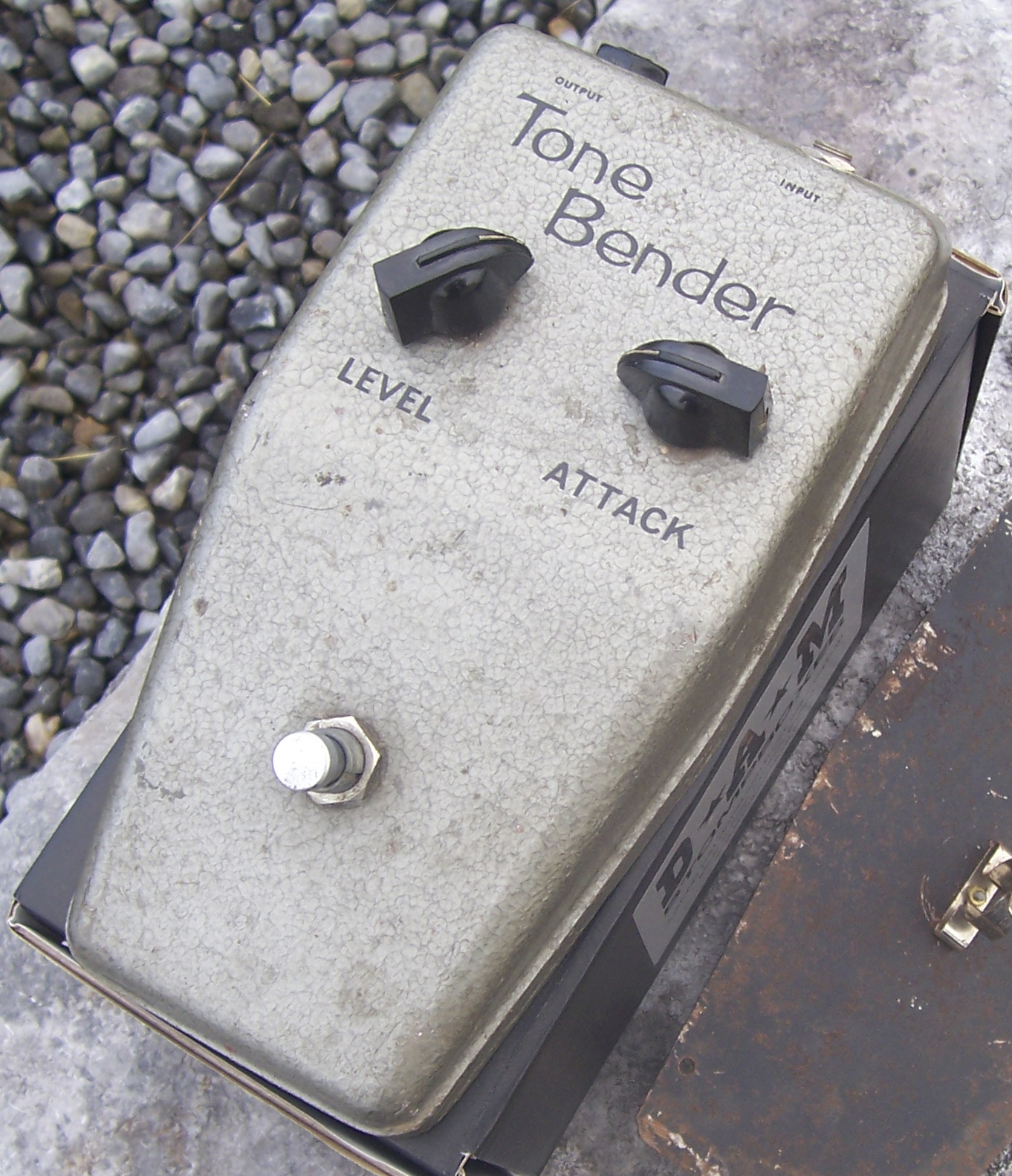
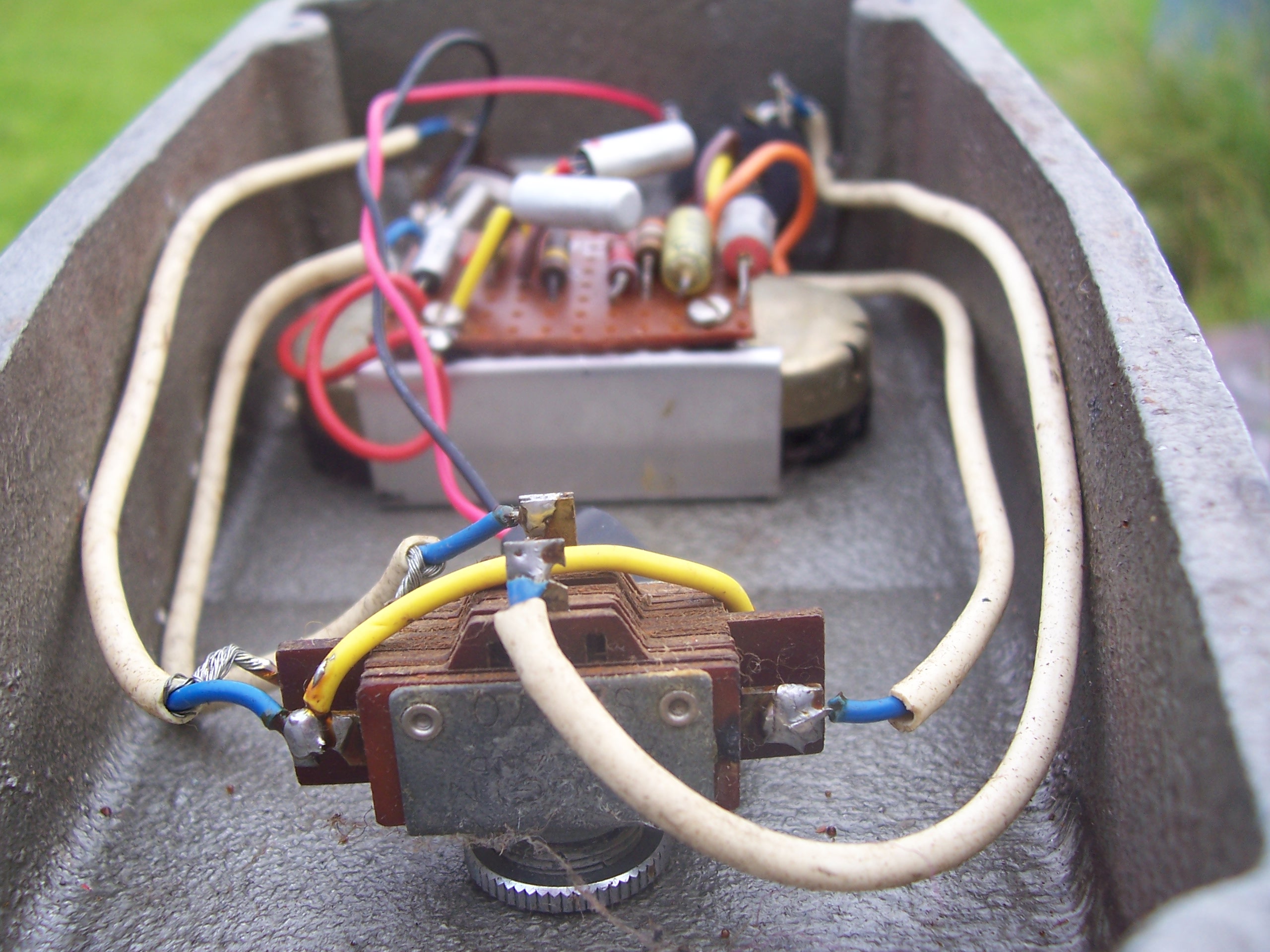
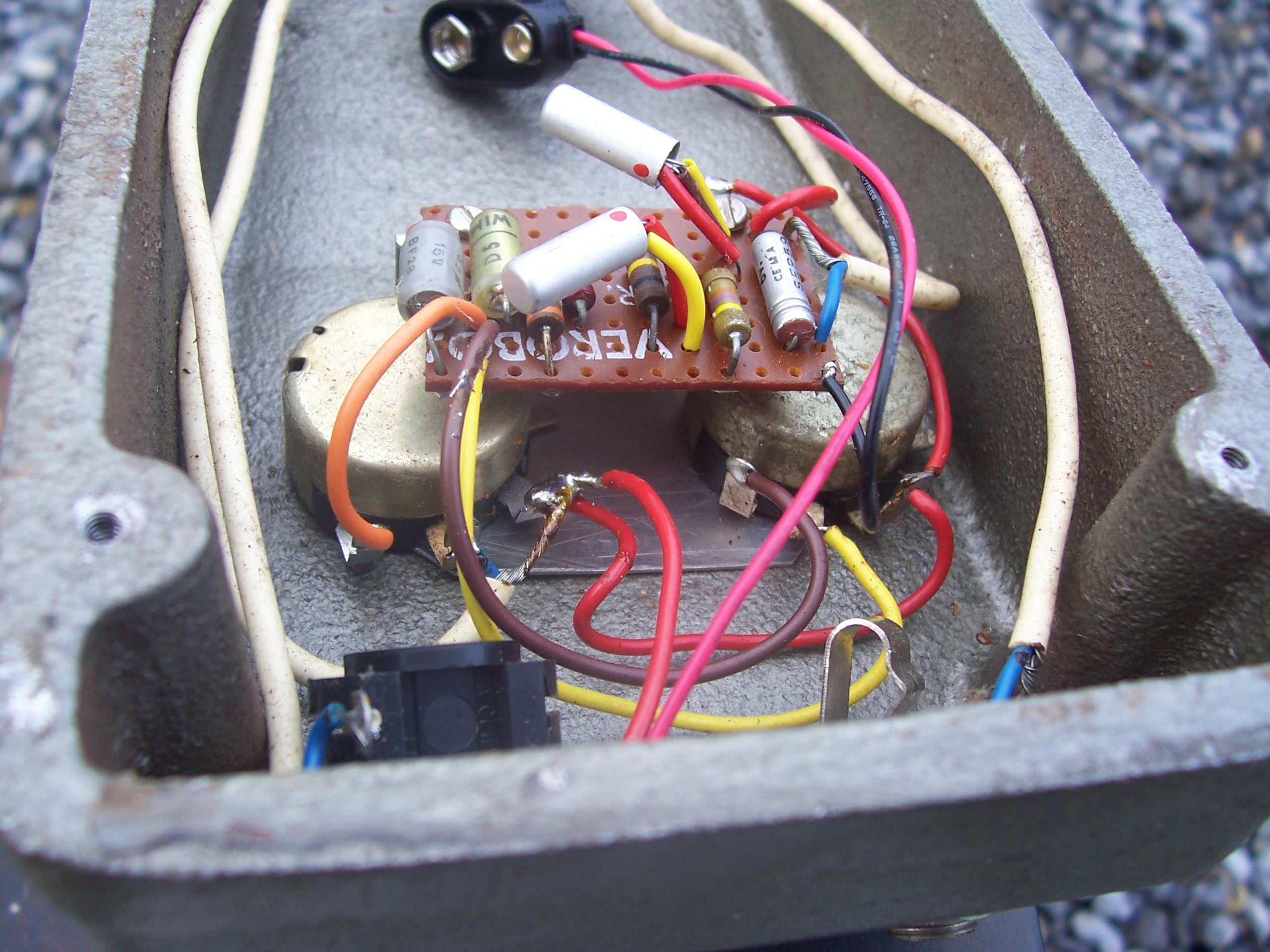
Other two-transistor Tone Benders were built with a different selection of parts to the standard OC75-transistor pedals. The general circuit topology remained the same, but these pedals came with Impex S3-1T transistors instead of the Mullard types.
The Impex ‘MK1.5’ pictured above is a particularly early two-transistor Tone Bender, complete with a ‘wafer’ style Bulgin switch (which was also used briefly used for the Tone Bender ‘MKI’ pedals), and a cast enclosure with its inside painted.
Other versions of the Impex ‘MK1.5’ were housed in the more commonly-seen enclosures with ‘burst’-painted insides, and built with the same moulded Arrow DPDT switches that Sola Sound would continue to use on their fuzz boxes until the early 1970s.
Early Impex ‘MK1.5’ Tone Benders were assembled with components dating to 1965, which leaves open the possibility that they may have been briefly built alongside the three-transistor ‘MKI’ model. The unusual selection of components (and type of shielded cabling) also suggests that the Impex-transistor pedals may have been built by a different person (or people), and perhaps at a different workstation. At this point, however, there is no concrete evidence yet to support any of these theories, nor to confidently place the position of the Impex ‘MK1.5’ in the timeline of the development of Sola Sound’s fuzz boxes. (Photo credit: S. Platt)
Unbranded Tone Bender MKII, c. 1967
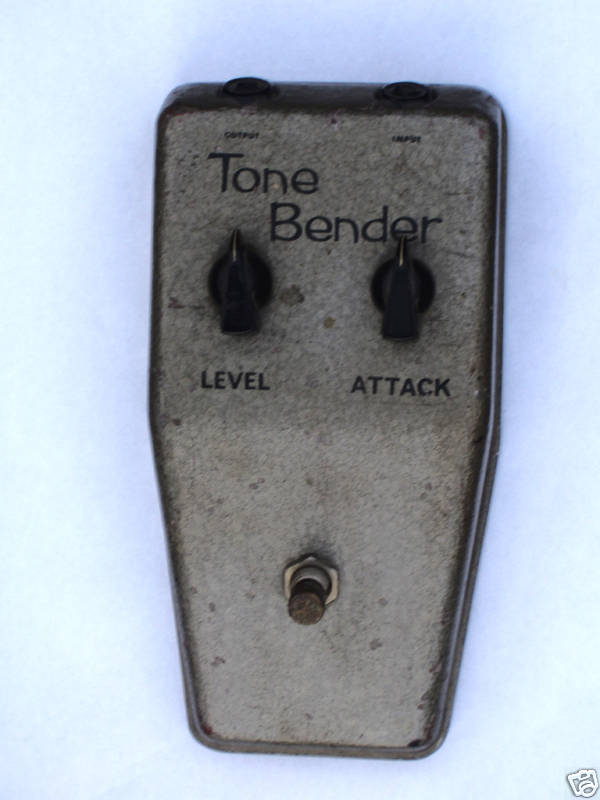
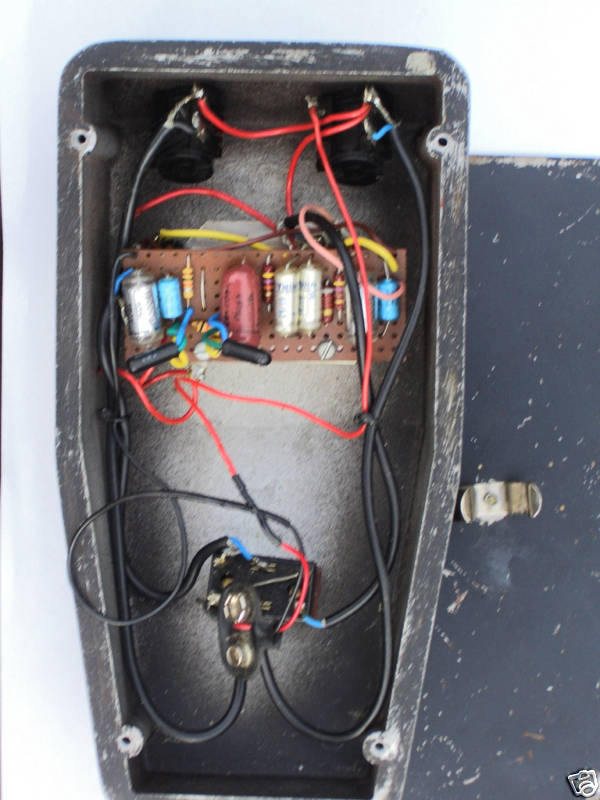
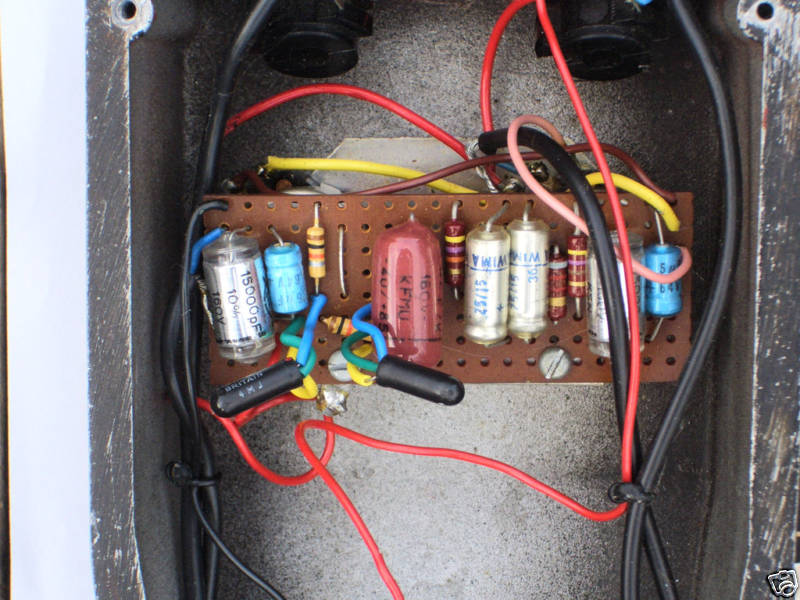
Instinctively, one might assume that this particular Tone Bender — with its dark grey paintwork, and lack of any company branding — should feature a typical two-transistor ‘MK1.5’ circuit. The reason why this pedal is unusual is that it has actually been built with a three-transistor Tone Bender MKII circuit (although the third-position transistor has been (re-)soldered on the track-side of the circuit board).
Various theories have been proposed over the years about the origin & ‘intention’ of this pedal. It was a possibility that this unbranded MKII served as an example of a transitional bridge between the two- and three-transistor Tone Benders. This is disputed, however, by the selection of components used in the construction of this pedal, which reveal that the pedal most likely wasn’t built before 1967 (and certainly well after the two-transistor Tone Bender circuit was discontinued).
This unbranded Tone Bender MKII is, at the time of writing, the only one of its sort known to have survived. Because of this, we cannot rule out other possible explanations, such as the pedal perhaps having been rebuilt by Sola Sound at a later point, or even whether the pedal might have been intended as a generic model, to be supplied to a variety of shops in the way that some of the conventional 1966 ‘MK1.5’ Tone Benders seemingly were. (Photo credit: eBay.com)
OEM products
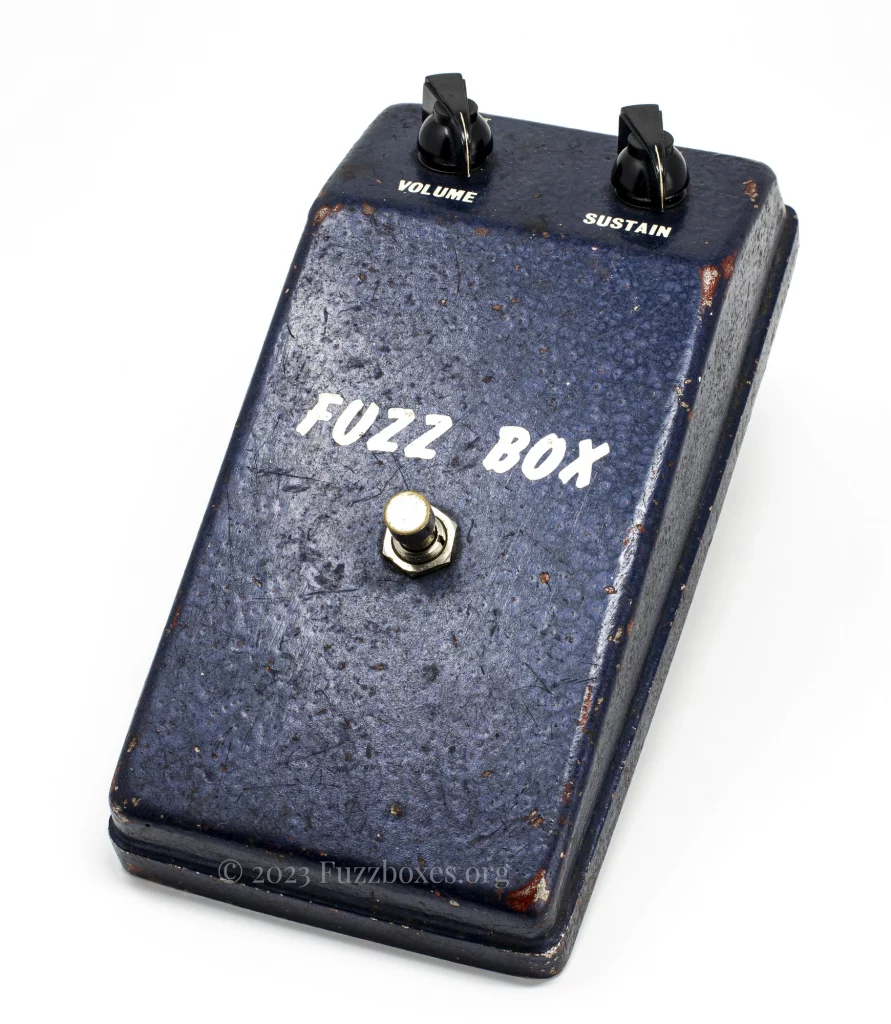
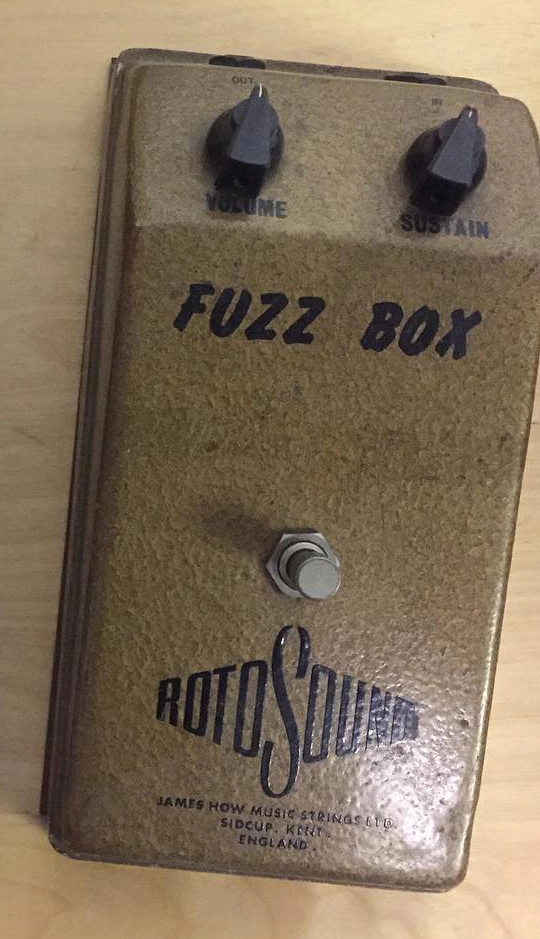
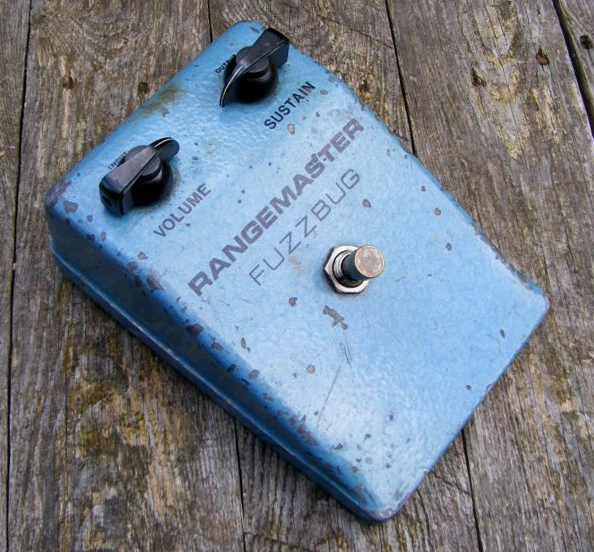
In 1966, Sola Sound was also acting as an OEM (original equipment manufacturer). This meant that, alongside the official ‘Tone Bender’ fuzz boxes, the company was also supplying the same product on behalf of a number of other brands. The same electronics that were built into the grey (and sometimes gold) Tone Benders, found their way into similar cast aluminium housings, but branded instead for companies such as Dallas [Rangemaster Fuzzbug] & Rotosound [Fuzz Box]. A generic, unbranded ‘Fuzz Box’ featuring a ‘MK1.5’ circuit was also briefly offered in 1966, and the anecdotal evidence surrounding one particular surviving example reveals it to have been originally sold by a music shop in Ireland.
Sola Sound’s position in the market as an OEM would continue until well into the 1970s, and the company’s guitar effects pedal designs that followed the ‘MK1.5’ were also supplied to other companies, much in the same way as with the Tone Bender. A selection of Tone Bender ‘MK1.5’ pedals that were rebranded for other companies and/or shops is pictured above. (Photo credit: J. How & D. Main)
Ronno’s Tone Bender
One particularly notable user of the ‘MK1.5’ Tone Bender was Mick Ronson. Before going onto global fame in the early 1970s, alongside David Bowie, Ronson played guitar with the Mariners and with the Crestas in the Hull area. Mick briefly lived in London, during the mid 1960s, playing guitar for the Voice, but returned to Hull in 1966 to join a newly-reformed Rats.
It is not known how or from where Mick originally obtained the ‘MK1.5’, but Mick’s pedal still survives (and is pictured below). The electronics in this ‘MK1.5’ date to 1966.

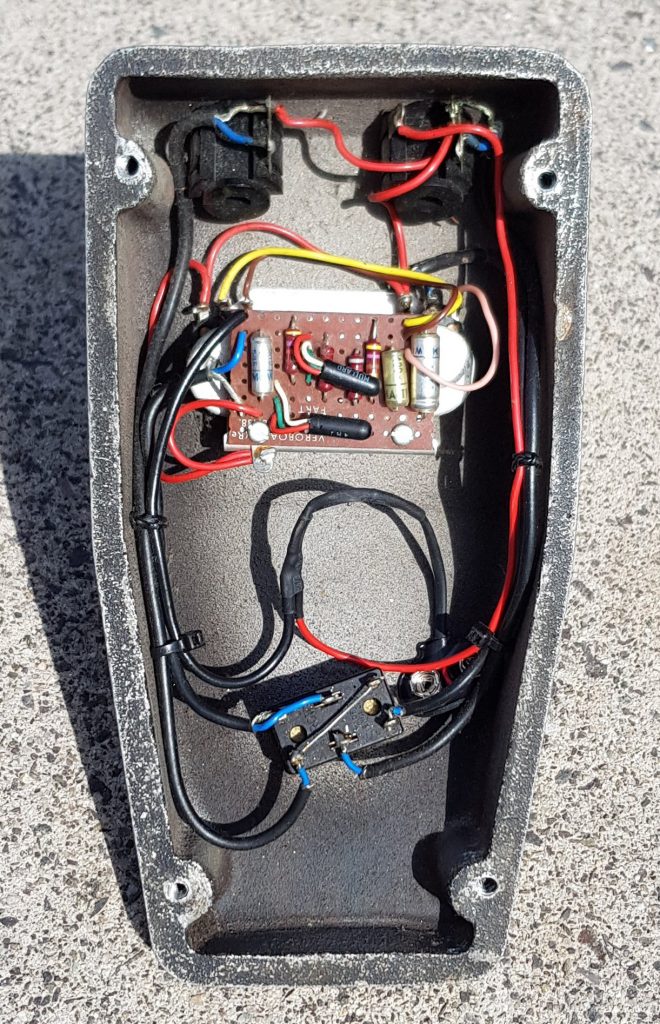
According to a childhood friend of Mick’s (and also the current owner of his ‘MK1.5’ Tone Bender) at some point in the 1960s the Rats showed up at his address, where Mick gave him the Tone Bender, along with a ‘grey’ JMI/Vox wah-wah and a Marshall speaker cabinet. Mick allegedly did not need the pedals anymore, as he had replaced them with a different fuzz box that he preferred. This sequence of events matches up with Keith Cheesman’s own memory of Mick returning from London with the ‘MKI’ Tone Bender1 that would famously be used throughout his tenure with the Spiders from Mars.
Many thanks to R. Wilkinson for the photo and history behind this pedal.
Other notable users
Because a portion of the stock of ‘MK1.5’ Tone Benders was modified to three-transistor Tone Bender MKII specifications, whilst retaining the same enclosure & hardware, it is almost impossible to determine from period photos which version of the Tone Bender a celebrity musician might have used. The grey Tone Benders that artists such as Jimmy Page (Yardbirds & Led Zeppelin), Syd Barrett (Pink Floyd) & Mike Ratledge (Soft Machine) were photographed using could have been built with either ‘MK1.5’ or MKII circuits.
The Beatles were photographed in the studio with a Tone Bender in April 1966.2 Based on the type of enclosure, and the timing of the photograph, in this instance, it is almost certain that the pedal in the photo is a ‘MK1.5′ Tone Bender. It’s unknown, however, whether this pedal was actually used for any of the Beatles’ recordings.
Testimonies and physical descriptions from original owners of Tone Benders reveal a number of specific songs that were recorded with the ‘MK1.5′. These include Him & The Others’ ‘I mean it‘,3 the Transatlantics’ ‘Don’t fight it‘,4 and Downliners Sect’s ‘Glendora‘.5
Distant cousins
The famous ‘Vox Tone Bender’ (model v828), pictured below, is easily mistaken for the two-transistor ‘MK1.5’ Tone Benders, because they were built in a very similar style enclosure, and featured a very similar two-transistor fuzz circuit. Unlike the British-built Tone Bender ‘MK1.5’, however, the Vox ‘v828’ Tone Benders were manufactured in Italy until the early 1970s. They were initially made by EME (Elettronica Musicale Europea), which was the company also responsible for building organs & wah-wah pedals under the Vox brand. Production was later taken over by the newly founded company, ‘Jen’. This Italian-built Vox Tone Bender was apparently intended for the American market. The model ‘v828’ appears in Thomas Organ catalogues from the time, and surviving examples overwhelmingly also resurface in the United States.
Pictured above, the British-built ‘MK1.5’ Tone Bender can be seen (left), along with its distant Italian-built model ‘v828’ cousins (middle & right).
Despite sharing the same model name & circuit topology, the Vox Tone Bender should not be attributed with the ‘MK1.5’ moniker. As to avoid confusion, a sensible way of differentiating between the two is by attributing the Italian model with its model number, as listed in period catalogues (namely ‘v828’). After all, the ‘MK1.5’ moniker refers to a very specific Sola Sound fuzz box: a de facto ‘missing link’ between the ‘MKI’ and Professional MKII.
Share your fuzz!
I welcome any comments, feedback, queries & corrections in relation to the Fuzzboxes.org project. Please get in touch via this contact form (or on the ‘contact‘ page).
Much of our understanding of the development of 1960s fuzz boxes comes from analysis of surviving pedals themselves, and so photos of pedals belonging to readers are particularly useful in furthering this research.
If you would like to contribute pictures of 1960s-era guitar effects to Fuzzboxes.org, then feel free to send in any pictures via the uploader below. Photos are greatly appreciated, and any submissions are not published on this website without advance agreement with the contributor.
- Keith ‘Ched’ Cheesman, interviewed in 2007 for Whotabs [https://www.thewho.net/whotabs/gear/guitar/tonebender.html]
- Freeman, Robert, 26th April 1966, The Beatles Recording [https://fuzzboxes.org/wp-content/uploads/2021/05/beatlestonebender.jpg]
- G. Gibbs (personal communication, 17th April 2020)
- J. Edmonds (personal communication, 28th June 2020)
- T. Clemson (personal communication, 11th December 2019)
